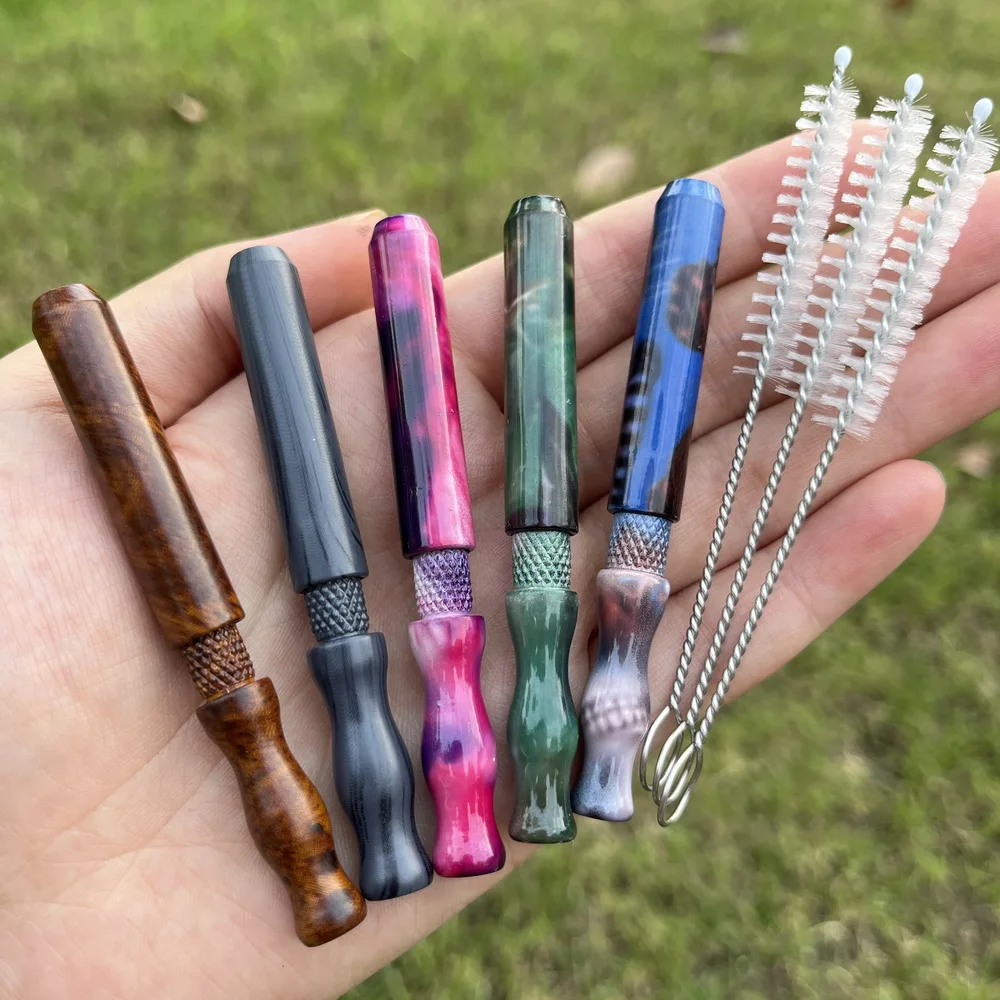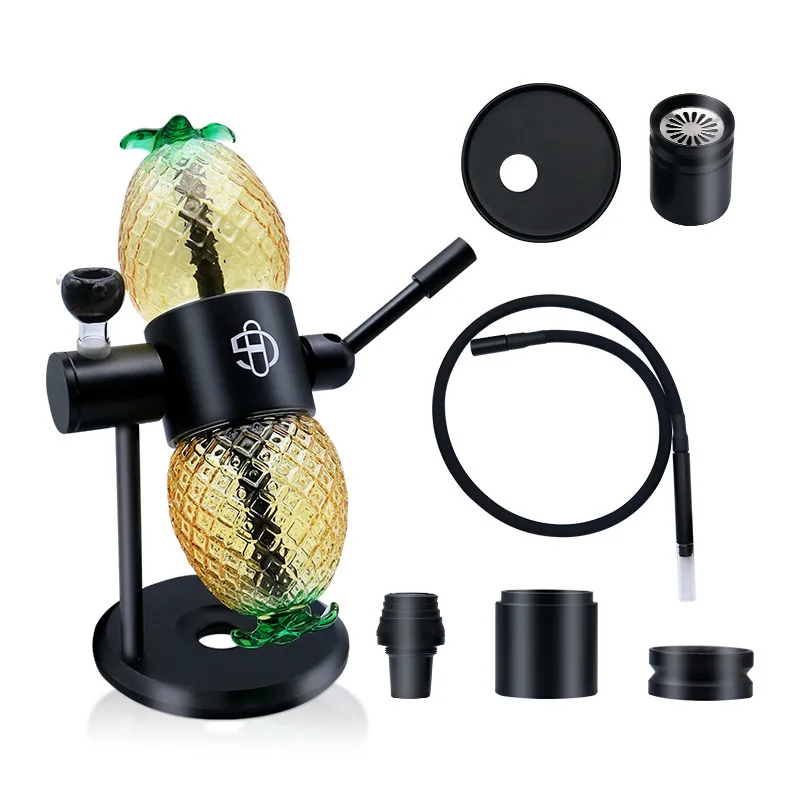By Angela Bacca
Cannabis breeders have notoriously been reclusive and secretive, primarily as a byproduct of Prohibition. While the last century has pushed many mainstream agricultural commodities towards a more narrowed genetic pool to support monocropping and mass production, cannabis genetics were shaped by a global underground cottage market comprised of small-scale grower-breeders, smugglers, and seedbanks that resulted in the variety that cannabis consumers have come to expect. Genetic sequencing and research are now rapidly reshaping cannabis cultivars as legalization pushes production into mainstream agricultural markets, yet cannabis is now following a very different path than agricultural commodities like corn and soy. While there is still lingering distrust with these new technologies and the motivations that fuel them, some cannabis breeders are not only starting to embrace these new technologies but are also teaching them alongside traditional cannabis breeding practices.
“Cannabis breeding isn’t just cannabis breeding anymore,” says James Loud, a former professional chef turned 25-year cannabis breeder and connoisseur, who has recently worked with geneticists, Amsterdam and North American seed companies, and well-known cannabis breeders and researchers to bring traditional breeding practices to the mainstream. “Now it’s genetic preservation, drug discovery, and breeding old varieties to increase heterosis and hybrid vigor; it’s about studying the plant more than we ever have.”
Loud is now actively working to mainstream and merge traditional practices with new technologies, like genetic sequencing and tissue culture, through his 2023 book Cannabis Breeding: The Art and Science of Crafting Distinctive Cultivars and a course through Oaksterdam University.
Genetic sequencing has rapidly accelerated modern understanding of plant breeding and medicine in the 21st century, but it hasn’t been without scandal and controversy. In some cases, the controversy is fueled by fears that arise from a misunderstanding of the scientific complexities, but in others, the distrust is warranted due to bad business practices.
Commercial genetic sequencing—for plants, humans, and even pets—has become low-cost and ubiquitous. While these tests provide interesting insights, like ancestry and relation to other plants or animals, they generally serve a greater purpose, which is to amass a larger sample of data that helps decode genomics and identify genetic markers associated with disease and traits. For humans, this means identifying genetic markers associated with predisposition to disease and, one day, potentially preventing it or editing it out entirely. For plants, like cannabis, this means creating cultivars that produce specific phytochemical profiles, are pest and disease-resistant, high-yielding, flavorful, and just about anything humans desire.
Collecting and sequencing the number of samples required to fuel major genomic discoveries is expensive, and those expenses have become the root of scandal and controversy for both human and plant genomics, slowing down the pace of discovery and stoking distrust.
“The real value of aggregated genetic information is correlating what you know about the genetic information with what you know about traits and physiology, and that kind of thing is how you really begin being able to interpret the genome,” says Dale Hunt, PhD, JD. Hunt is a plant biologist and patent attorney who works closely with the cannabis breeding community through his company, Breeder’s Best, to help breeders protect and commercialize their cultivars.
Earlier this year, attorneys general in many states began issuing urgent warnings to human genetic sequencing company 23andMe customers to delete their data. The California-based company provides low-cost consumer ancestry and genetic tests from small test tubes of saliva that often return stunningly accurate ancestry information, identify the likelihood of genetic traits, and match people to relatives all over the world. Initially, the goal was to fuel discovery that could improve human health. However, when limitations were imposed by the FDA, the company found itself unable to sustain its operations on these tests alone, first leveraging a partnership with pharmaceutical giant GlaxoSmithKline in 2018 and then spiraling into the 2025 bankruptcy that fueled the panic earlier this year. The fear was that the bankruptcy would place the company’s massive genetic database into the hands of whoever could pay the most for it, which could have devastating impacts on customers.
“That really polarized 23andMe’s business plan of putting the customer first, and now they were in emergency mode. They knew they couldn’t survive off ancestry tests alone,” says Kevin McKernan. McKernan was part of a team at the Massachusetts Institute of Technology that helped sequence the full human genome through the collaborative Human Genome Project in 2000. Today, his company, Medicinal Genomics, focuses on cannabis genomics.
The cannabis industry experienced a similar fallout in 2019 when a video of Phylos Bioscience co-founder Mowgli Holmes speaking to an investor conference in Florida stirred up a wave of animosity from the cannabis breeding community and fears of a Big Ag takeover. Since the sequencing of the whole cannabis genome in 2013, Phylos has rocketed the industry’s understanding of cannabis plant relationships and ancestry out of the darkness of Prohibition into the realm of science. Their work made it possible to begin unraveling the mysteries of how the plant evolved into what it is today through clandestine seed smuggling and eventually commercial seed banks.
While many commercial cannabis breeders and producers were quick to send in samples of their genetics and begin the work to demystify the cannabis genome, many more remained distrustful and were enraged by Holmes’s comments. However, many of the community’s fears about what Phylos could and was doing with genetic sequencing data never played out: Monsanto did not come in and use their data to steal and patent genetics, and Phylos didn’t (and couldn’t) recreate breeders’ genetics from the samples they collected. Like 23andMe, the controversy led to a pivot, but one that has instead led to major genetic discoveries that have been shared to further other researchers.
“They aren’t hoarding [what they learn] and keeping it a secret; they are sharing it with the community,” says McKernan of Phylos’s recent breeding research.
While human genomic sequencing and research have been rightfully constrained by ethics, cannabis isn’t hampered in the same way, which has accelerated innovation in breeding.
“In humans, platforms like 23andMe have to rely on undirected population datasets to pull out correlations between genetic data and traits. In plants, we can take a much more direct route. The difference is that in plants, we can design controlled crosses that measure direct outcomes in a targeted way. In humans, you can’t control who reproduces with whom (thankfully), so you’re stuck mining random variation in the general population for statistical signals. That makes plant marker discovery much more efficient,” says Alisha Holloway, Chief Scientific Officer of Phylos Bioscience.
And what researchers at Phylos Bioscience and Medicinal Genomics are now contributing to cannabis genetics is profound.
Phylos Bioscience contributed the greatest research so far in untangling the secrets of the traditional cannabis market when they produced the Phylos Galaxy, an interactive map that displayed cultivar relationships through stars (sequences of individual cultivars) and constellations (colorful lines connecting them to their families). Like 23andMe, this map’s accuracy was built on an unrivaled sample set before many commercial breeders even began to submit their samples. The Galaxy blew up one of the most pervasive myths in the cannabis world: “strain names” truly meant next to nothing, as a search for popular names like “Blue Dream” brought up samples both closely related and unrelated across the Galaxy. For the first time, some of the lies, secrets, and myths of the cannabis family tree were being exposed—just like 23andMe was doing for humans.
“The Phylos Galaxy started with a very diverse set of samples, which provided a broad view of cannabis genetics. Over time, the picture that emerged was shaped by what people were actually growing and selling, so commercial varieties were heavily represented. We also worked hard to include landrace accessions, because those lines carry unique diversity and traits that commercial plants often lack. Landrace varieties may hold resistance to disease, or entirely different chemical profiles, and including them meant the Galaxy showed a more complete picture of diversity, even if we didn’t know what traits that diversity represented,” says Holloway. “That dynamic led to one of the Galaxy’s most important insights. Cannabis varieties that survived in the market were the ones that met two conditions: they had to create a great experience for consumers, and they had to work economically for cultivators. Without agronomic traits like yield, vigor, or pest resistance, no variety could succeed at scale, no matter how amazing the effects were. The sales price doesn’t always scale with the effort to grow a cultivar. Those high-cost-to-grow plants usually stayed in personal head stashes instead of being grown commercially. Breeders are now revisiting those varieties with unique effects and are able to incorporate better agronomic traits. The great thing is that we’re bringing growers better plants while maintaining the diversity of aromas and effects for consumers.”
“By making this visible, the Galaxy showed how market forces shape genetic diversity. It helped explain why certain varieties took over, why others disappeared, and how the industry was filtering plants to balance consumer demand with grower profitability. At the same time, it revealed how untapped diversity could be harnessed to create new possibilities for the future. The Galaxy also gave breeders a way to understand the genetic background of the plants they were working with. Sometimes crossing very different backgrounds produces novel phenotypes, and the Galaxy lets people see those opportunities before making breeding decisions. By making the results public, we not only supported research and defended against patents, but we also gave breeders a way to connect, share knowledge, and collaborate more effectively.”
Holloway says that by giving cultivators a way to verify the uniqueness of their cultivars and understand their pedigrees, the Galaxy provided clarity in the market where “strain names” had come to mean almost nothing. What it didn’t do was allow the company to associate traits with the genetic map, identify new genetic markers, nor did it allow them to recreate, or clone, new plants from the data.
“The Galaxy was a diversity map, not a breeding engine,” Holloway says.
While many of the fears that underlie the mass deletion of consumer data from 23andMe, the same scenario never actually played out in cannabis. Sequencing and patenting did not limit genetic diversity, and instead, companies like Medicinal Genomics and Phylos Bioscience, along with breeders commercializing their varieties through companies like Dale Hunt’s Breeder’s Best, the cannabis plant has diverged heavily from mainstream agriculture in that sequencing has largely supported targeted breeding—not genetic modification—and is leading to improved and enhanced commercial varieties.
McKernan points to research Medicinal Genomics has been doing to understand the cannabis plant’s microbiome (similar to the human gut microbiome) and how it affects yield and should inform more “common-sense” safety testing in commercial markets.
“I think we’re going to see over time that getting the microbiome right in your plant and the genetics of your plant right means you’re going to get better yield, higher pass rates, and probably better quality flower,” McKernan says.
He also points to genetic research conducted by Zamir K. Punja, who has been able to identify that cultivars that tend to turn purple may also have a higher natural resistance to hop-latent viroid, which has devastated some commercial markets
Despite these advances, one of the industry’s most pervasive goals with genetic sequencing has remained, and will remain, elusive: correlating effects with cultivar (or strain) names. Some of the best-funded ancillary cannabis companies—like Leafly.com—were premised on the possibility that this could be done, and many in the industry felt genetic sequencing would finally allow these names to be associated with effects and unravel the medical mysteries and genetic potential of specific cultivars, placing disproportionate value on individual cultivars themselves as opposed to the plant’s whole genomic possibility. The reality of what can and can’t be discovered with plant genetics, and how, has shaped the reality of genetic marker-assisted breeding.
For now, McKernan, Holloway, and Hunt all agree that the concept of associating specific cannabis genetics with effects in humans is unlikely.
“Effect is subjective,” says Hunt. “It’s reported by user, and different user experiences can be different, even with the same user and the same variety of cannabis. Also, I don’t think we know enough yet to know that a particular effect always comes from a particular phenotype,” Hunt says.
“It is possible to find genetic markers for specific compounds, like THCV, and then make some predictions about the effects a variety might have. The bigger issue is that we still have not fully mapped which combinations of compounds in cannabis are responsible for which effects. Cannabinoids are only part of the picture. There are hundreds of other molecules at play, and their interactions matter. THCV, for example, often produces an energizing, motivating effect, but just knowing that a plant has the genetic potential for THCV does not tell you how it will interact with other compounds to produce different effects. We also are just beginning to understand why some people have very different experiences with the same products, which remains one of the deeper mysteries of cannabis.” Holloway says.
“We’re a bit of a ways off only because we don’t have good studies on human genetics and cannabis use,” says McKernan, although he points to small strides made by researchers like Ethan Russo, PhD, who demonstrated specific genetic markers in people more susceptible to cannabinoid hypermesis syndrome. Medicinal Genomics has focused on plant microbiome research that could reshape how state-mandated safety testing is conducted, refine cultivation practices, and increase yields.
Phylos is focusing on traits that allow cultivators to grow at scale efficiently while also creating a reliable consumer experience, such as high yields, strong potency, complex and interesting aromas, rare cannabinoids, distinctive color variations, clone-like uniformity, and stress tolerance. They have worked extensively with autoflowering genetics, reshaping them so that they flower quickly regardless of light period, but also are higher potency, higher yield, taste and smell better, and have more bag appeal.
“All of our research funnels into varieties where these traits are not just present but fixed and reliable,” Holloway says. “One example is our work with THCV. By using genetic markers that we discovered, we were able to upregulate THCV from about 4 percent to as much as 20 percent, which was an early demonstration of how targeted breeding can create real breakthroughs. This type of work allows growers to bring plants with unique effects to market, which brings profit to the growers and provides consumers with new options.”
Hunt points out how marker-assisted breeding has taken a radically different path for cannabis than for other mainstream agricultural commodities. Mainstream agriculture typically breeds for a few distinct traits based on mass production for a limited number of end uses. As a result, commercial cultivars for commodities such as corn and soy are not genetically diverse. The human demands on the cannabis plant are pushing cannabis breeding in many directions, not just toward the highest yields.
“If we had more corn connoisseurs, we would probably have more diversity in commercial corn,” says Hunt. “The thing is, with cannabis, there was always more diversity [than traditional agriculture] because we are asking the plant to do more things. The diversity of the uses of the plant creates a floor for how much uniformity there could be genetically, because if you have pure genetic uniformity, you’re not going to be able to address a lot of the different uses of cannabis.”
Hunt says that while traditional cannabis breeders were generally breeding for the same traits—such as yield and THC production—marker-assisted breeding is allowing for rapid reshaping of cannabis cultivars.
Hunt contributed a chapter to James Loud’s Cannabis Breeding book about intellectual property and plant diversity. As a plant patent attorney, he can speak to both the fears that arose when genetic sequencing took hold in cannabis and how many of those fears aren’t playing out in reality.
“I don’t think patenting necessarily limits diversity, but it correlates with business purposes that don’t necessarily place a high value on diversity,” Hunt says. And, as he points out, cannabis consumers are demanding so many different things from cannabis that it would be difficult to obtain, enforce, and profit from single monocropped cultivars.
For his part, James Loud plans to keep pushing breeders to merge their traditional knowledge with these new technologies to advance cannabis breeding.
“The future is bright, and it’s all going to come back to genetics,” Loud concludes.
Angela Bacca. MBA, began covering the cannabis industry as a student journalist in San Francisco in 2006. Since then, she has authored hundreds of articles and edited, managed, and/or co-authored over a dozen books, mostly on cannabis horticulture and medicine, in addition to editing and managing various cannabis-centric digital and print magazines. Her work has focused on cannabis economics, politics, science, horticulture, cultural issues, non-cannabis herbalism, and complementary and alternative health topics. She is the Director of Academics at Oaksterdam University.
Photo by Google DeepMind on Unsplash
This article is from an external, unpaid contributor. It does not represent High Times’ reporting and has not been edited for content or accuracy.


























